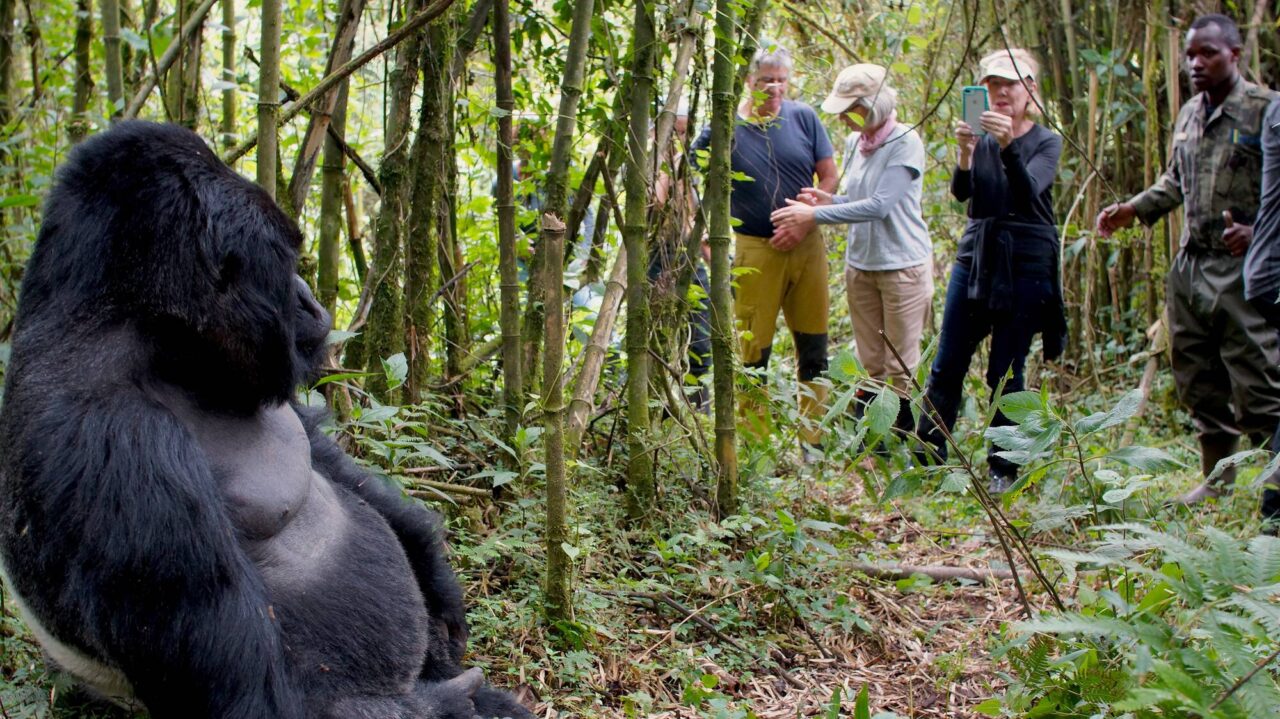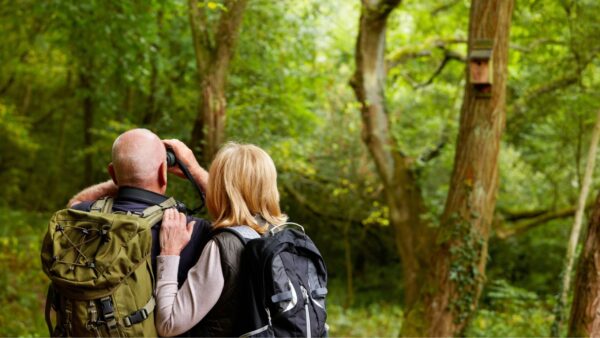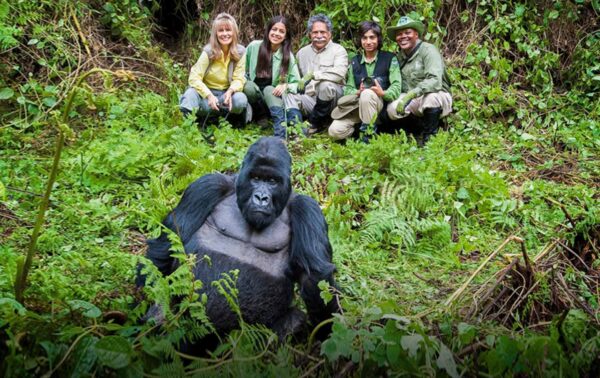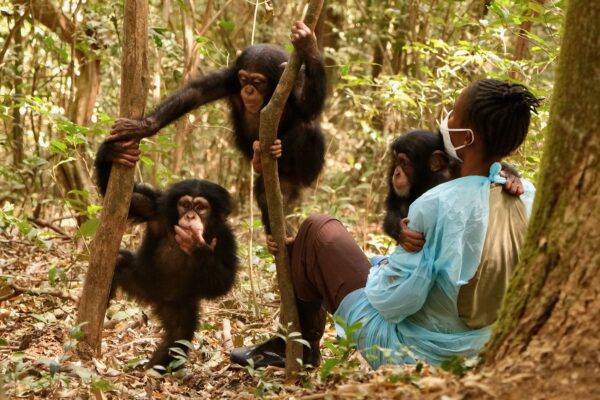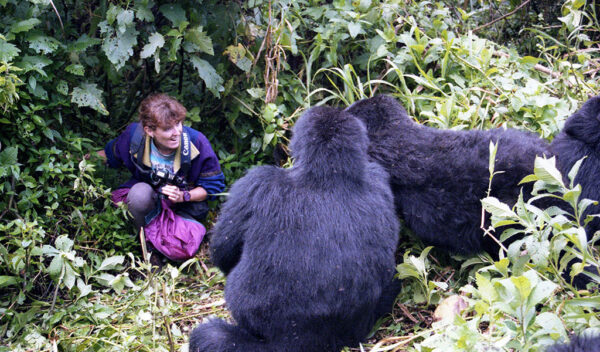
How Do Guides Track the Great Migration Patterns?
November 26, 2025
How Difficult is Gorilla Trekking in Bwindi Impenetrable Forest?
November 27, 2025How Do Gorilla Trekking Safaris Contribute to Local Communities?
Have you ever wondered, “How do Gorilla Trekking Safaris contribute to local communities?” This question goes beyond the allure of observing mountain gorillas in their natural habitat. Gorilla trekking is not only one of the most exhilarating wildlife experiences in Africa but also a vital engine for community development and conservation. At Renai Safaris, we believe that responsible tourism is the cornerstone of sustainable travel, ensuring that every Rwanda Gorilla Safaris or Rwanda Gorilla Trekking Safari benefits both travelers and local populations alike.
Understanding the Socio-Economic Impact of Gorilla Trekking Safaris
Volcanoes National Park in Rwanda, Bwindi Impenetrable Forest in Uganda, and Mgahinga Gorilla National Park are prime destinations for gorilla trekking. These regions are home to rural communities that often rely on subsistence farming and local crafts for income. Gorilla trekking brings international travelers directly into these areas, creating economic opportunities that extend far beyond the safari itself. For instance, revenues from trekking permits are partially reinvested into community development projects, including education, health care, and clean water initiatives.
Beyond financial contributions, Rwanda Gorilla Safaris and Uganda Gorilla Trekking Safaris foster cultural exchange. Visitors engage with local communities, learning traditional dances, music, and storytelling, or participating in craft workshops. This interaction not only supports artisans and cultural preservation but also strengthens cross-cultural understanding. Renai Safaris emphasizes combining wildlife encounters with Rwanda Cultural Safaris to provide a holistic travel experience, where the benefits of tourism are shared equitably.
Understanding how Gorilla Trekking Safaris contribute to local communities is essential for travelers who seek ethical and meaningful tourism. It demonstrates that the thrill of observing gorillas can coexist with the empowerment of human communities, reinforcing the principles of sustainability, conservation, and shared prosperity.
Economic Empowerment Through Gorilla Trekking
When travelers ask, “How do Gorilla Trekking Safaris contribute to local communities?”, one of the most significant impacts is economic empowerment. Gorilla trekking generates substantial revenue for local populations through park fees, accommodation, guides, and ancillary services. In Rwanda, for example, a portion of every gorilla trekking permit fee goes directly to community development initiatives surrounding Volcanoes National Park. These funds help build schools, improve healthcare facilities, construct clean water systems, and create employment opportunities, ensuring that local residents benefit tangibly from tourism.
Renai Safaris ensures that travelers on Rwanda Gorilla Trekking Safaris have meaningful interactions with local communities. By staying in locally-owned lodges, hiring local guides, and purchasing handcrafted souvenirs, visitors contribute directly to the livelihoods of those who live near protected areas. This approach transforms a simple wildlife experience into a socio-economic investment, strengthening community infrastructure and resilience.
In addition to direct financial benefits, gorilla trekking stimulates secondary economic activity. Restaurants, transportation services, and local markets thrive as tourists arrive for Rwanda Best Safaris or combine their trips with Uganda Gorilla Trekking Safaris. Even small vendors selling local food, handicrafts, or guiding services benefit from this ecosystem. Renai Safaris ensures that itineraries are designed to maximize these positive impacts, emphasizing ethical tourism practices that uplift communities while preserving natural habitats.
Ultimately, understanding how Gorilla Trekking Safaris contribute to local communities highlights the interconnectedness of wildlife tourism and human well-being. Every permit purchased, every guided trek, and every cultural exchange contributes to a sustainable economic model that supports both the gorillas and the people who share their environment.
Social Development and Education
Another crucial dimension to the question, “How do Gorilla Trekking Safaris contribute to local communities?”, is social development, particularly in education. Revenues generated from gorilla trekking are often allocated to building and supporting local schools, providing scholarships for children, and funding educational programs that teach conservation awareness. For instance, communities surrounding Volcanoes National Park benefit from initiatives that integrate environmental stewardship into local curricula, ensuring that the next generation values and protects their natural heritage.
Renai Safaris encourages travelers to engage in community-based learning during Rwanda Gorilla Safaris or combined Uganda Gorilla Trekking and Rwanda itineraries. Many communities offer guided tours of local villages, visits to schools, or participation in traditional craft-making workshops. These experiences provide tourists with an authentic understanding of local life while generating income that sustains education programs. By supporting these initiatives, travelers play an active role in creating lasting social impact.
Moreover, gorilla trekking empowers marginalized groups, such as women and youth, by providing employment in hospitality, guiding, and conservation roles. Local women, for instance, often run guesthouses, sell handicrafts, or serve as community guides. This involvement fosters gender equality, skill development, and increased household income. Through careful planning, Renai Safaris ensures that travelers’ participation in Rwanda Cultural Safaris and gorilla treks amplifies these positive outcomes, making wildlife tourism a tool for human development.
Understanding the educational and social impact of gorilla trekking allows travelers to appreciate that these safaris are more than sightseeing adventures—they are catalysts for long-term societal transformation, where conservation, education, and community prosperity intersect.
Conservation and Community Integration
A key aspect of answering “How do Gorilla Trekking Safaris contribute to local communities?” lies in understanding the link between conservation and community integration. Gorilla trekking is inherently tied to the protection of habitats and the species themselves. By generating revenue through trekking permits, local communities are given a direct stake in conservation efforts, fostering a sense of ownership and responsibility for protecting gorillas and their ecosystems.
For example, in Rwanda, the Rwanda Development Board (RDB) allocates a percentage of each gorilla trekking permit fee to local communities bordering Volcanoes National Park. This strategy has led to the establishment of community projects such as reforestation programs, anti-poaching patrols, and wildlife monitoring initiatives. By involving local populations in these projects, communities become active participants in the preservation of natural resources, rather than passive observers.
Renai Safaris emphasizes itineraries that integrate both wildlife encounters and community engagement. Travelers on Rwanda Gorilla Trekking Safaris may visit local conservation centers, interact with rangers, or participate in habitat restoration activities. Additionally, combining Rwanda Gorilla Safaris with other experiences such as Rwanda Wildlife Safaris, Rwanda Birding Safaris, or Uganda Gorilla Trekking Safaris creates an even greater network of conservation benefits and community support.
In essence, gorilla trekking fosters a symbiotic relationship: communities receive economic and social benefits, while gorilla populations thrive in protected and monitored habitats. Understanding this connection answers the question of how Gorilla Trekking Safaris contribute to local communities by highlighting the integrated approach that balances human development with ecological preservation.
Cultural Preservation Through Gorilla Trekking
Beyond economic and environmental contributions, travelers often ask, “How do Gorilla Trekking Safaris contribute to local communities?” in terms of cultural preservation. Gorilla trekking immerses tourists in areas rich in heritage, where communities maintain centuries-old traditions in music, dance, crafts, and storytelling. By participating in Rwanda Cultural Safaris, visitors not only gain insight into local life but also provide the financial support needed to preserve these cultural practices.
Local artisans and performers benefit from tourist engagement, selling handicrafts or performing traditional dances for trekking visitors. This income encourages younger generations to maintain cultural practices rather than abandoning them for urban migration. Moreover, travelers who combine Rwanda Gorilla Trekking Safaris with cultural tours in Musanze, Nyungwe, or Lake Kivu regions experience a holistic understanding of Rwanda’s heritage, where wildlife and culture coexist.
Renai Safaris ensures that cultural experiences are ethically designed, with communities directly involved in planning and executing tourist activities. This guarantees authenticity while ensuring that profits return to the local people. Combined with Rwanda Chimpanzee Safaris, Rwanda Wildlife Safaris, and cross-border adventures with Uganda Gorilla Trekking, these experiences create a comprehensive travel package that highlights both natural and cultural treasures.
In this way, gorilla trekking serves as a vehicle for cultural preservation, allowing communities to celebrate and sustain their traditions while benefiting economically and socially.
Combining Gorilla Trekking with Uganda and Rwanda Safaris
Finally, answering “How do Gorilla Trekking Safaris contribute to local communities?” also involves exploring cross-border safari experiences. Travelers who combine Uganda Gorilla Trekking Safaris with Rwanda Gorilla Safaris gain not only an enriched wildlife encounter but also an expanded impact on multiple communities. Every trekking permit, lodge stay, and guided excursion generates income that benefits rural populations in both Uganda and Rwanda.
For example, a traveler may trek gorillas in Bwindi Impenetrable Forest, then continue to Volcanoes National Park for Rwanda Gorilla Trekking Safaris, while also enjoying Rwanda Birding Safaris, Rwanda Cultural Safaris, or Rwanda Wildlife Safaris in Akagera National Park. This combination enhances economic impact, supports conservation across borders, and strengthens local communities by creating employment and infrastructure development in both countries.
Renai Safaris excels at designing such integrated itineraries, ensuring that all permits, guides, accommodations, and experiences align with sustainable tourism practices. By carefully planning multi-country safaris, travelers maximize both their adventure and the social, economic, and cultural contributions of their journey.
In conclusion, understanding how Gorilla Trekking Safaris contribute to local communities reveals a complex web of benefits — from economic empowerment and social development to conservation and cultural preservation. These safaris are more than wildlife encounters; they are a powerful tool for sustainable development, allowing travelers to create meaningful impact while experiencing some of the world’s most extraordinary natural wonders.

